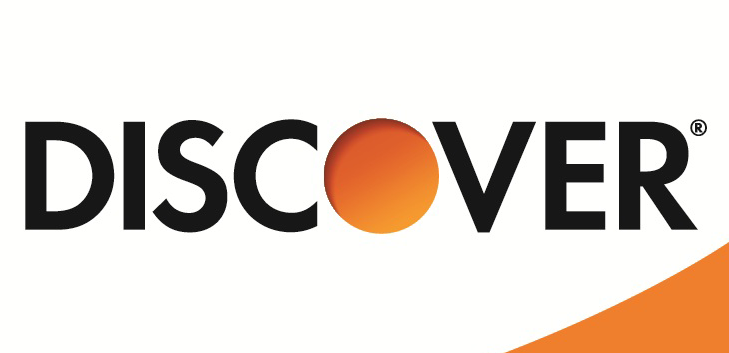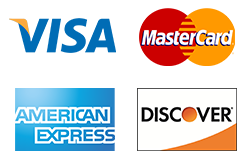When you partner with NDMS, you partner with one of the most experienced, attentive and knowledgeable partner support teams in the industry. Your clients enjoy a single point of contact, a single platform, and clear pricing while you enjoy access to an extensive set of resources designed with you in mind. In short, we take care of our partners by providing an excellent solution to their customers and by giving them the tools they need to succeed.
Hosted banners, logos, and graphics for our partners to use on their websites and paypages









The first stage in the lifecycle of a credit or debit card payment is authorization. This is the step in which the amount of money of the purchase is requested from the consumer’s card bank—also known as the issuing bank—by the merchant. It is in this stage that the merchant will be notified if the consumer has insufficient funds. Should the consumer have enough funds, the authorization puts a hold on the purchase amount, protecting it without actually moving any money.
In order to complete authorization, a merchant needs a gateway or a terminal by which to communicate with the issuing bank. Here, NDMS has a great deal of knowledge with regards to matching up the appropriate authorization technology with individual merchants, as not all gateways and terminals can complete certain functions, such as a refund or a void.
The second stage in the lifecycle of a credit or debit card payment is capture. Authorization and capture are commonly grouped together as they often occur at approximately the same time. Together, an authorization and a capture can be called a sale. In the capture stage of the lifecycle of a payment, the merchant can specify if they only want a portion of the funds, or if they want the purchase voided. Usually, however, the merchant will chose to take the full purchase amount and request that their processor uses the information from the authorization to request the actual funds.
Once the merchant batches out their terminal—usually this occurs at the end of every day—the issuing bank deposits the requested funds to the merchant’s merchant account. This is the third step in the lifecycle of a credit or debit payment. The merchant account then pushes the transactions to the card brands to receive payment.
The final step in the lifecycle of a credit or debit card payment is deposit. In this step, the funds get transferred from the merchant account to the merchant’s actual depository bank, which they can use to continue running their business and ensure that the lifecycle of payments continues.
In order for any merchant to accept payments online, two services are necessary: a merchant account and a payment gateway. While these two services are certainly interconnected, they are not the same, and understanding the difference between them is an important step towards navigating the online payments world. So what is the difference between a merchant account and a payment gateway?
On a high level, one can think of the merchant account as the financial piece of accepting payments and the payment gateway as the technological piece of accepting payments online. More specifically, however, a merchant account is an intermediary bank account that holds funds from credit and debit card sales until they are moved into the merchant’s depository bank. Meanwhile a payment gateway is the software technology that captures and securely transfers payment card transaction information from a merchant’s online shopping cart to the card brands for processing. NDMS provides the merchant account services in this equation, however we also offer an in-house payment gateway, as well as the flexibility and expertise to match each individual merchant with the best payment gateway for their needs. Because NDMS is compatible with virtually all payment gateways—including USAePay, and Authorize.net—when you partner with us you can either select a preferred payment gateway for your merchants to use, or let us match your merchants with an appropriate payment gateway for you.
Any merchant looking to accept credit or debit card payments online or otherwise must choose between a pay-as-you-go solution and a direct merchant account. Because each merchant is unique, there is no universal or correct choice for this decision. There are however, respective advantages to both pay-as-you-go solutions and direct merchant accounts, and understanding what kind of merchant will benefit most from which type of solution can save both you and your merchants valuable time and resources. So what are the respective benefits of a direct merchant account vs. a pay-as-you-go solution?
The main advantage of a pay-as-you-go solution is simplicity. Most pay-as-you-go solutions—such as Square or Stripe—have essentially aggregated all of the elements in the payment lifecycle so that there is very little for merchants to think about or do. With pay-as-you-go solutions, there is no need for merchants to spend any time on decisions regarding which payment gateway, physical POS or eCommerce shopping cart is optimal for their needs. This type of solution is ideal for a low-volume merchant that wants to keep things in their payment process as simple as possible. As a rule of thumb, this kind of merchant is consistently processing under $2500/month.
On the other hand, the main advantage of a direct merchant account is customizability and price. Direct merchant accounts allow merchants much more opportunity to fully optimize their solution to fit their business needs. The perceived complexity of a direct merchant account, particularly in juxtaposition to a pay-as-you-go solution like Stripe, is only a result of the plethora of options available to those merchants who choose a direct merchant account. With a direct merchant account, merchants are locked into neither a POS system nor an eCommerce shopping cart, and are free to integrate reporting in addition to other customizations. Additionally, direct merchant accounts generally have a lower total cost, assuming the merchant is processing over the rule of thumb threshold of $2500/month.
The Payment Card Industry Data Security Standards, or the PCI DSS, are a globally recognized set of standards that work to alleviate merchant-based vulnerabilities in the card-processing eco-system so that cardholder data remains secure. Essentially the PCI DSS are the rules by which cardholder data must be protected. Although the Payment Card Industry Security Standards Council, or the PCI SSC, creates these PCI data security standards, it is not the enforcer of these standards. The payment card brands bear the responsibility of enforcing the PCI DSS. Below are links to specific payment card brand compliance programs:
All merchants that accept card payments are required to comply with the PCI DSS. Whether this compliance is formal or ideological is contingent on several factors, such as the size of the business. To self-assess current PCI compliance, there are several Self-Assessment Questionnaires, or SAQs, that merchants can fill out for their specific class of card payment acceptance.
PCI DSS compliance is a complex issue, but merchants will appreciate you having a basic understanding of who the PCI SSC is, what the PCI DSS are for, or what these acronyms even mean! Visit www.pcisecuritystandards.org for more PCI information, documentation, and resources.
NDMS offers extensive plug and play compatibility. For any software you do not see listed,
contact us and we can provide the resources for integration with custom software.
ePay+ Wordpress Plugin
PaidYET API
Cybersource API
Bridgepay API
USAePay API
Authorize.net API